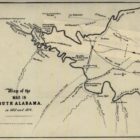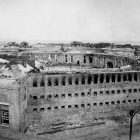Battery Duportail
Battery Duportail (1901-1931) – Battery Duportail (1901-1931) – Battery Duportail was a reinforced concrete, Endicott Period 12 inch coastal gun battery on Fort Morgan , Baldwin County, Alabama. The battery was named in G.O. 78, 15 May 1903 after Maj. Gen. Louis L. Duportail, Chief of Engineers (1777-1783), Continental Army, who served with distinction during the Revolutionary War and who died at sea in 1802 while en route to France. Battery construction started in 1898, was completed in 1900 and transferred to the Coast Artillery for use 3 Jun 1900 at a cost of $ 172,646.05. Declared surplus in 1931.













